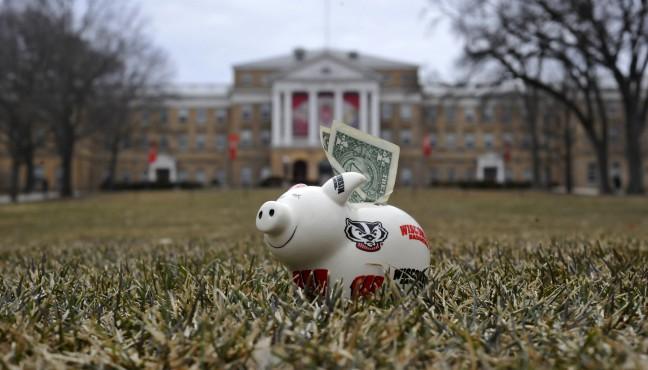Gov. Tony Evers announced he intends to fully fund the continuation of Gov. Scott Walker’s tuition freeze on all UW schools. This cap on college tuition has been in the state’s budget ever since its inception in 2013 and is meant to maintain affordability of college while ensuring UW campuses get the funding they need to operate at a high level.
This issue is really exciting because it tends to unite the two parties. It is attractive to every college-attending voter, but the UW System and ordinary taxpayers can also reap benefits from a well-funded tuition freeze. The benefits are almost innumerable — there’s affordability, the economic advantages of having a college-educated populous, easier class mobility and the ability to make the University of Wisconsin a competitive post-secondary institution. But let’s look at the benefits in a more historical context.
It begins with asking why tuition is so expensive in the first place. Why is it so difficult for the state to keep costs low and maintain affordable tuition for its schools?
William J. Bennett is the author of a famous 1987 New York Times article, “Our Greedy Colleges,” also known as the “Bennett Hypothesis.” He served as Secretary of Education from 1985 to 1988 under Ronald Reagan. He said, “I postulated that the availability of a large amount of federal money was driving up tuition and in the long run making it more difficult for poor students to go. It’s common sense. The more you subsidize something, the more you get of it.” Research exists to support the plausibility of federal subsidies playing a role on, even directly influencing, the price tag of higher education.
Federal student loan providers are doing to students now what mortgage lenders were doing to prospective homeowners back in the early-to-mid-2000s. Whether this is a bubble about to burst is another story — student loan collateral is on future income and not on a physical object that needs to be bought back and resold at a loss, and is thus less likely the student loan bubble will burst — but the correct comparison remains. When one makes college affordable to just about anyone, universities can and will increase their spending.
Prior to the 2013-14 academic year, there was no statutory restriction on the amount by which the UW Board of Regents could increase tuition and as it turned out, the Legislative Fiscal Bureau found in the six years from 2007-08 through 2012-13, resident undergraduate tuition generally increased by an average of 5.5 percent annually.
They also discovered a cash surplus of $648 million at the end of the 2011-12 fiscal year — $414 million of which came from tuition. About $207 million of that surplus had unrestricted purpose. The state put an end to this in the biennial budget (see 2013 Act 20 §9148 (4n)) of 2013 by requiring the Board of Regents to not charge resident undergraduates more in tuition than it charged in the prior year. Ever since then, undergraduate residents have been paying the 2012-13 tuition rate.
Initially, many came out in defense of the surplus as a business-as-usual practice, to protect against revenue volatility. Then-System President Kevin Reilly said the cash balances were viewed as cushions against future enrollment losses. But ultimately, this discovery led the state Legislature under Walker to freeze tuition in an attempt to make the UW System use its surplus and as a convenient selling-point to voters, save students some money. Since then, tuition carryover rates have sharply declined from 16 percent in 2013 to 6 percent and remains today at 6 percent which they still hold onto for undesignated purposes.
In sum, the tuition freeze has done a lot of good for students. According to the LFB, if tuition increase trends had continued, in-state tuition at UW would be about $12,786 per student per year. The tuition freeze has also forced the UW to operate at a more stable budget, not one that is expected to increase. But like some have pointed out, this freeze cannot continue indefinitely.
While a single entity cannot pull all the levers, at least three important levers exist in this situation when it comes to tuition costs — student loan providers who make the burden of tuition easier, but may unintentionally inflate costs, the Board of Regents who directly control the cost of tuition but are under the influence of changing educational demands and shifts in state funding and the state legislature who can pen statutes over what the Board can and cannot do with its revenue. The tuition freeze is definitely one successful tool for keeping college affordable and the UW System spending in check.
Lianna Schwalenberg (lschwalenber@uwalumni.com) is a recent graduate with degrees in communication arts and philosophy.


